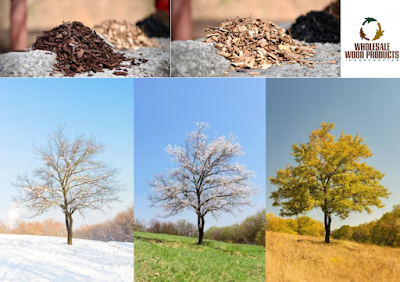9 Steps to Successful Edible Garden Using Mulch
Introduction
When it comes to successful food gardening, incorporating mulch into your gardening routine can be a game-changer. Using mulch in Roswell isn't just about aesthetics; it's a strategic approach that offers a host of benefits, including conserving water, suppressing weeds, promoting soil health, and enhancing overall plant growth. In this guide, we will walk you through the essential steps to growing food using mulch.
Whether you're a seasoned gardener or a beginner eager to get your hands dirty, these steps will help you create a thriving edible garden that yields abundant harvests.
Step 1: Selecting the Right Mulch for Your Garden
Choosing the appropriate type of mulch is the first step towards successful food gardening. Consider factors like your climate, soil type, and the types of crops you're growing:
Organic Mulch: Options like straw, wood chips, and compost break down over time, enriching the soil with nutrients. These are ideal for vegetable and fruit gardens.
Inorganic Mulch: Materials like landscape fabric or plastic can effectively suppress weeds and retain moisture. They're particularly useful for ornamental gardens or areas with specific weed issues.
Step 2: Preparing the Soil
Before applying mulch, it's essential to prepare the soil for optimal plant growth:
Weeding: Remove existing weeds to prevent them from growing through the mulch layer.
Soil Aeration: Loosen the soil around your plants to ensure adequate air and water penetration.
Soil Enrichment: Consider adding compost or other organic matter to enhance soil fertility.
Step 3: Applying Mulch Properly
Applying mulch correctly is crucial to ensure its effectiveness and your plants' health:
Even Distribution: Spread the mulch evenly across the soil surface. Aim for a layer that's around 2 to 4 inches deep.
Avoid Piling: Keep the mulch away from the base of plants to prevent moisture buildup and discourage pests.
Mulch-Free Zone: Leave a small area around the plant stems free of mulch to prevent rot and disease.
Step 4: Watering and Mulch
Proper watering is essential when using mulch in your garden:
Water Before Mulching: Make sure the soil is well-watered before applying mulch. Moist soil helps retain moisture and provides a good growing environment for plants.
Mulch as a Moisture Retainer: Mulch acts as a barrier, reducing water evaporation and helping the soil retain moisture. This can significantly reduce the frequency of irrigation.
Step 5: Seasonal Mulching Strategies
Adapt your mulching strategy based on the changing seasons:
Spring Mulching: Apply mulch in the spring to lock in soil moisture, suppress weeds, and protect emerging plants.
Summer Mulching: Keep plants cool and conserve moisture during hot months by maintaining a consistent layer of mulch.
Fall Mulching: Insulate the soil against temperature fluctuations and prepare for overwintering by adding a layer of mulch in the fall.
Step 6: Mulch Maintenance
To reap the full benefits of mulching, regular maintenance is key:
Mulch Refreshment: Over time, mulch breaks down and may thin out. Replenish the layer annually to maintain its effectiveness.
Weed Inspection: While mulch helps suppress weeds, some may still emerge. Regularly inspect your garden and remove any weeds that manage to grow.
Step 7: Monitoring Plant Health
Keep an eye on your plants to ensure they're thriving:
Adjust Mulch Depth: If you notice that plants are struggling, adjust the mulch depth. Too much mulch can suffocate plants, while too little may not provide adequate protection.
Identify Pests and Diseases: Regular monitoring allows you to spot potential pest or disease issues early. Address them promptly to prevent further damage.
Step 8: Harvesting and Mulch
Harvesting produce doesn't mean you have to disturb your mulch layer:
Gentle Harvesting: When picking fruits or vegetables, be mindful not to disturb the mulch layer or the soil beneath.
Mulch Rearrangement: After harvesting, gently rearrange the mulch to cover any exposed soil.
Step 9: Soil Enrichment through Decomposition
As mulch breaks down, it contributes to soil health:
Nutrient Release: Organic mulches release nutrients as they decompose, enriching the soil and supporting plant growth.
Microbial Activity: Decomposing mulch encourages beneficial microbial activity in the soil, contributing to its overall vitality.
Conclusion
Growing food using mulch is a practical and sustainable approach to gardening. By selecting the right mulch from Wholesale Wood Products, preparing the soil, and applying mulch properly, you can create an environment that fosters healthy plant growth, maximizes yield, and minimizes the challenges of weed competition and water evaporation. Remember to adapt your mulching strategy to the seasons and practice regular maintenance to ensure long-lasting benefits. With these steps in mind, you're well on your way to cultivating a thriving edible garden that rewards you with a bountiful harvest season after season.



Comments
Post a Comment